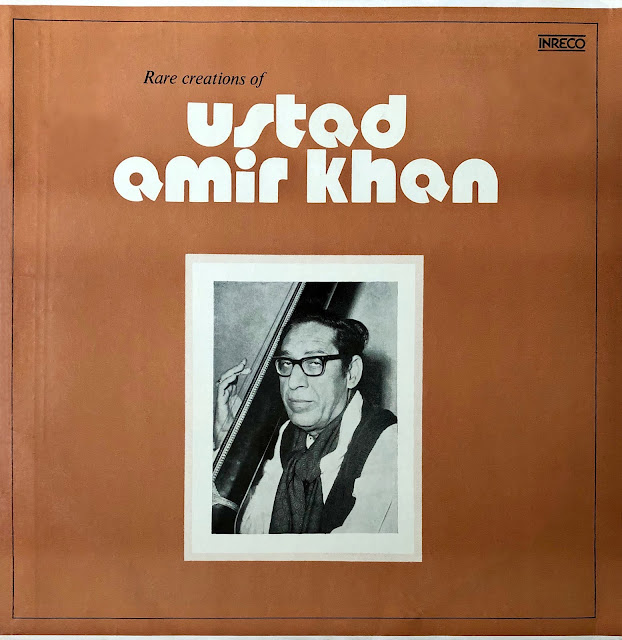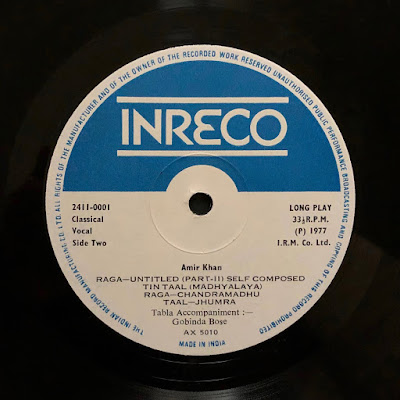INDIA – INDE
Amir Khan – Rare Creations of Ustad Amir Khan – Inreco 2411 0001, recorded by Sri Arun Chatterji in 1974 (LP)
Amir Khan – Rare Creations of Ustad Amir Khan – Inreco 2411 0001, recorded by Sri Arun Chatterji in 1974 (LP)
Amir Khan (1912-1974) was an unrivalled Hindustani classical Khyal vocalist gifted with a deep, mellow baritone voice that effortlessly expressed intensity, sensuality, creativity, dignity and glowing majesty.
Alas, this intimate recital of personal compositions by Khan, the founder of Indore Gharana, was his last recording, as he died tragically a few weeks later in a car accident, depriving India and the world of one of the greatest singers of the 20th century at the height of his powers.
Khan is accompanied here by Gobinda Bose on tabla.
Khan is accompanied here by Gobinda Bose on tabla.
Amir Khan était un chanteur classique de Khyal d’Inde du nord sans pareil, doté d'une voix baryton suave et profonde qui exprimait l'intensité, la sensualité, la créativité, la dignité avec une majesté éclatante.
Khan est accompagné aux tablas par Gobinda Bose.
Download
The photograph below is from Le Grand Moghol et ses Peintres by Amina Okada, Flammarion, 1992:




























